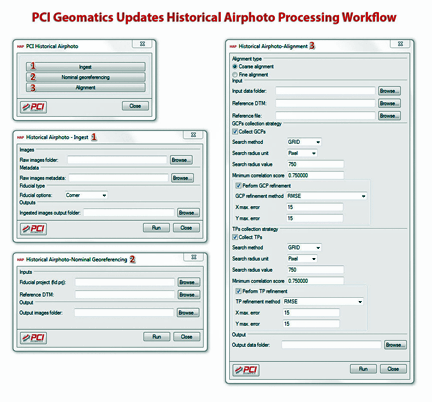
[SatNews] PCI Geomatics has successfully delivered its high-speed and automated Historical Airphoto Processing (HAP) system to the USDA’s Forest Service office in Region 5 (California and Pacific Islands).
“There are a number of vegetation related issues that can be studied by looking at changes across the historical imagery that are of interest to researchers within the Forest Service,” said Carlos Ramirez, Team Leader of the Remote Sensing Laboratory at USDA Forest Service’s Region 5. “Using HAP, we plan to generate digitally mosaicked datasets from the archived historical imagery that can be used to conduct change detection and analysis. In our archives, we have access to imagery dating back to the 1930s that can be analyzed; the first steps to make this possible include scanning, correcting and orthorectifying the historical imagery to ensure that the information extracted is accurate and can be used for change detection.”

“The HAP system automates what used to be a very manual process, providing typical processing capability on the order to 1,000 to 1,500 orthos per operator, per week,” said Clark Selby, US Regional Solutions Manager for PCI Geomatics. “Our HAP system is increasingly being adopted since it provides a viable method to process historical imagery and bring it into modern day geospatial systems.”
In recent years, the Forest Service has seen an increasing demand for historical imagery from local forest service offices, as well as internal and University based forest researchers. Historical imagery is currently stored on hard copy prints within the Forest Service’s facilities. Local officials and researchers are limited to accessing and analyzing historical information on the physical prints, which greatly restricts their utility. The historical imagery provides a record of the changes which the Forest Service can use to better understand the delicate balance between naturally occurring changes and the anthropogenic forces that are having an impact on the landscape. Fire frequency and intensity have been on the rise in the last decade, which scientists believe is linked to fire suppression activities that have interrupted natural forest regeneration cycles.
Region 5’s GIS and Remote Sensing professionals are greatly improving access to the valuable historical imagery across the organization. Through the use of the HAP within their facility, they are making the hard copy prints more readily accessible to internal and external parties who have expressed a need to work with the imagery.

